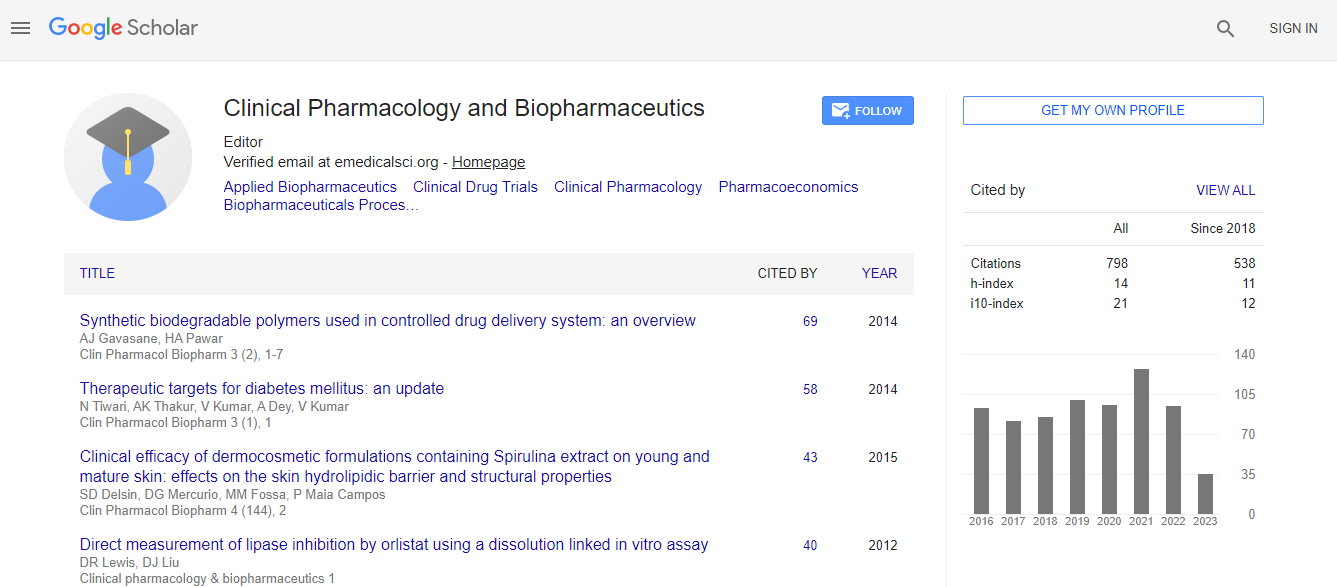Our Group organises 3000+ Global Conferenceseries Events every year across USA, Europe & Asia with support from 1000 more scientific Societies and Publishes 700+ Open Access Journals which contains over 50000 eminent personalities, reputed scientists as editorial board members.
Open Access Journals gaining more Readers and Citations
700 Journals and 15,000,000 Readers Each Journal is getting 25,000+ Readers
Google Scholar citation report
Citations : 1089
Clinical Pharmacology & Biopharmaceutics received 1089 citations as per Google Scholar report
Clinical Pharmacology & Biopharmaceutics peer review process verified at publons
Indexed In
- CAS Source Index (CASSI)
- Index Copernicus
- Google Scholar
- Sherpa Romeo
- Genamics JournalSeek
- RefSeek
- Hamdard University
- EBSCO A-Z
- OCLC- WorldCat
- Publons
- Euro Pub
- ICMJE
Useful Links
Recommended Journals
Related Subjects
Share This Page
Bioequivalence criteria for inhaled corticosteroids: The need for global harmonization
International Conference and Expo on Biopharmaceutics
Hartmut Derendorf
University of Florida, USA
Posters-Accepted Abstracts: Clin Pharmacol Biopharm
Abstract
At present, there are no approved generic inhaled corticosteroids available in the US market. This is surprising since this indication represents a multi-billion dollar market and the patents of some of the market leaders are already expired. The reason for this situation is the lack of a regulatory guidance that will enable generic manufacturers to submit an ANDA for approval of a bioequivalent product. The concern, as with any topical product, is that the conventional bioequivalence study based on a comparison of drug exposure in plasma may not be appropriate and not correctly reflect the relative availability at the site of action in the lungs. Hence, the only way that a generic company can get a product approved is to undergo expensive clinical trials, which defeats the purpose of the generic drug product concept. Interestingly, the approach of the EMA in Europe has been exactly the opposite. The EMA has issued a guidance document that may allow generic approval based on in-vitro equivalence alone. However, the detailed criteria are so strict that this scenario seems not very realistic. If in-vitro equivalence is not achieved, then a pharmacokinetic study based on drug exposure in plasma can be submitted. Interestingly, even if the pharmacokinetic studies come out to be not able to show equivalence, generic approval is still a possibility if clinical equivalence can be shown. It can be shown that of the three different measures (in-vitro performance, pharmacokinetics and clinical study) the pharmacokinetic approach is the most sensitive. Hence, it is proposed to harmonize the equivalence criteria world-wide and base the approval on both in-vitro studies and pharmacokinetic studies but not require any clinical studies.Biography
Email: hartmut@cop.ufl.edu

 Spanish
Spanish  Chinese
Chinese  Russian
Russian  German
German  French
French  Japanese
Japanese  Portuguese
Portuguese  Hindi
Hindi 
